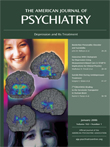Psychiatry, Psychoanalysis, and the New Biology of Mind
Eric Kandel, University Professor at Columbia University College of Physicians and Surgeons, was awarded the 2000 Nobel Prize in Medicine or Physiology for his groundbreaking work on the molecular mechanisms underlying learning and memory. His discoveries, based on his initial studies of the sea snail Aplysia and later studies in mice, demonstrated that learning depends on changes in the strengths of synapses and that long-term, as opposed to short-term, memory requires the activation of a gene cascade that leads to the growth of new synaptic connections.
This book consists of seven of his previously published papers spanning the period between 1979 and 2000, as well as the commencement address he gave in 2001 to Columbia’s graduating medical students. The papers focus on his neurobiological research, recommendations for new intellectual frameworks for psychiatry and psychoanalysis, and guidelines for future investigations in clinical psychiatry and psychoanalysis. Each paper is accompanied by commentary from leading psychiatrists and psychologists, some of whom are neuroscience researchers and some psychoanalysts.
The author’s collected papers are preceded by a personal memoir of his undergraduate years at Harvard, when, fascinated by the insights of psychoanalysis, he decided to enter medical school in order to become a psychoanalyst. In medical school and later in his formal psychiatry training at the Massachusetts Mental Health Center in Boston in the late 1950s and 1960s, he became profoundly disappointed with the anti-intellectualism and biology-psychoanalysis dichotomy he encountered in American psychiatry. This disappointment contributed to his eventual decision to pursue neurobiological research instead of further clinical training.
He offers these essays with the “hope that molecular biology will provide a fresh perspective on the study of behavior and that the ensuing insights will lead to a new science of the mind, one that is grounded in the rigorous empirical framework of molecular biology yet incorporates the humanistic concepts of psychoanalysis.” His afterword, written in 2004, underlines his hope that psychiatry and psychoanalysis will “again capture the best and brightest of the next generations” by joining with neuroscience to develop a true biology of the mind.
Today, it is easy to forget how revolutionary Kandel’s work was in the late 1970s, when he reported his findings that experience could alter the brain. I vividly remember, during my second year of formal psychiatry training, hearing him present an early version of the first paper in the book, “Psychotherapy and the Single Synapse.” My colleagues and I were a bit incredulous that snails could teach us anything about the complexities of human beings. As Joseph LeDoux, the Henry and Lucy Moses Professor of Science at New York University, comments at a later point in the book, Kandel’s work is taken for granted by neuroscientists today, but it was a “long shot in 1983.”
For me, the heart of the book is “Biology and the Future of Psychoanalysis: A New Intellectual Framework for Psychiatry Revisited,” originally published in 1999 in the Journal(1). Kandel specifies eight areas in which biology and psychoanalysis could cooperate: 1) the nature of unconscious mental processes, 2) the nature of psychological causality, 3) psychological causality and psychopathology, 4) early experience and the predisposition to mental illness, 5) the preconscious, the unconscious, and the prefrontal cortex, 6) sexual orientation, 7) psychotherapy and structural changes in the brain, and 8) psychopharmacology as an adjunct to psychoanalysis. Arnold Cooper, a training and supervisory analyst at the Columbia University Center for Psychoanalytic Training and Research, exhorts his colleagues to accept Kandel’s challenge to study the “biology of subjectivity, consciousness, selfhood, and conflict.”
The strength of this book is based on its clear descriptions of the neurobiological correlates and underpinnings of psychiatric clinical science and on its specific suggestions for areas of future research, especially related to what Kandel acknowledges as psychoanalytic insights. A limitation is that in some ways he is challenging an outdated version of psychoanalysis prevalent in the United States until at least the 1970s, when, indeed, many analysts behaved and taught as if the brain were not a relevant organ. Kandel himself quotes Anton Kris, who says that “one listens differently now.” Contemporary medical educators would not recognize Kandel’s characterization of medical student education as a model that focuses exclusively on teaching psychotherapy. Analysts would not universally accept Kandel’s assumption that the highest aspiration of psychoanalysis is to become “the most cognitive of neural sciences.” Cognition, as most analysts use the term, simply does not capture all of the concerns of psychoanalysis, including emotion, empathy, suffering, the development of selfhood, and the repetition of harmful or self-endangering behavior.
John Oldham describes Kandel’s last essay as “eloquent, integrative, and visionary” but acknowledges that we are far from translating individual genetic and other information into real therapeutic outcomes. I wish that more of the commentaries had similarly focused on the complexities and challenges of translating Kandel’s work into empirical clinical research, let alone clinical outcomes.
This hopeful and inspiring book will be especially useful for two groups—for teachers of medical students, psychiatric residents, and psychoanalytic candidates and for those trained in psychoanalysis who accept the challenge of psychoanalytic research. It is clear, succinct, illustrated by useful neurobiological models, and well referenced. It details many advances in our understanding of the way the brain works, specifically regarding learning and the formation of memories. Especially engaging are Kandel’s vivid descriptions of his psychiatric training, his infectious enthusiasm for teaching, and his exhortations to study empirically the insights of psychoanalysis, which, he says “still represents the most coherent and intellectually satisfying view of the mind.”
1. Kandel ER: Biology and the future of psychoanalysis: a new intellectual framework for psychiatry revisited. Am J Psychiatry 1999; 156:505–524Abstract, Google Scholar



